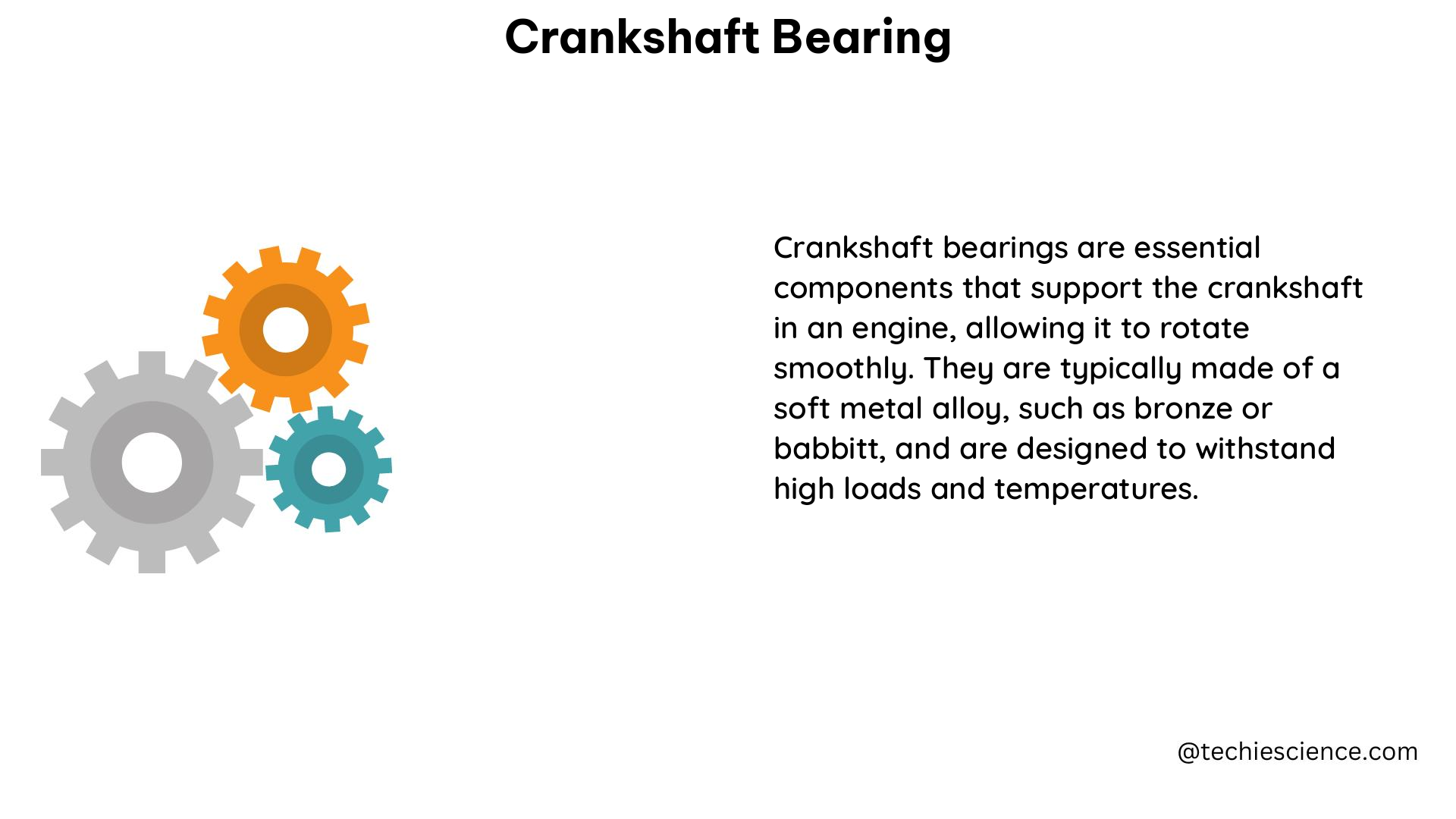Crankshaft bearings are critical components in an engine, responsible for supporting the crankshaft and ensuring smooth, efficient power delivery. Accurate measurement and maintenance of crankshaft bearing clearances are essential for optimal engine performance, longevity, and reliability. This comprehensive guide delves into the intricate details of crankshaft bearing clearance measurements, tolerances, and best practices to help mechanical engineering students and professionals alike.
Understanding Crankshaft Bearing Clearance
The crankshaft bearing clearance is the distance between the crankshaft journal and the bearing’s inner surface. This clearance is crucial for proper lubrication, load distribution, and overall engine health. Maintaining the correct clearance range is vital, as excessive clearance can lead to increased wear, vibration, and even engine failure, while insufficient clearance can result in increased friction, heat, and premature bearing failure.
Main Bearing Clearance Measurement
The main bearing clearance is typically measured at the top of the bearing, as the heavy weight of the crankshaft rests on the bearing shell at the bottom when the engine is stopped. The standard value for main bearing clearance is around 0.4 mm (0.016 inches).
There are two common methods for measuring main bearing clearance:
- Using a Telescopic Feeler Gauge:
- The telescopic feeler gauge must be inserted carefully, without forcing, to avoid breaking the gauge and getting it lodged in the clearance.
- The largest size that goes in easily is the main bearing clearance.
-
By comparing the current clearance measurement with the last recorded value, the wear rate can be calculated.
-
Using a Dial Gauge through the LO Pipe Assembly Holes:
- The dial gauge is first calibrated in a calibrator and set to zero.
- It is then inserted into the designated hole on top of the main bearing housing.
- The typical value of main bearing clearance is around 0.4 mm (0.016 inches).
Crankpin Bearing Clearance Measurement
The crankpin bearing, also known as the bottom-end bearing, is located between the crankpin and the connecting rod. It supports the load of the connecting rod, crosshead, and piston. The crankpin bearing clearance is always measured at the bottom side, between the crankpin and the bearing. The typical value of bottom-end bearing clearance is around 0.4 mm (0.016 inches).
To measure the crankpin bearing clearance:
1. Insert a feeler gauge between the bottom of the crankpin and the bearing, from both the forward and aft sides.
2. The piston position can be at any angle, but it is generally kept at Bottom Dead Center (BDC) for convenience.
Bearing Clearance Tolerances

The commonly accepted rule for bearing clearance in street and performance engines is 0.0010 inches for every 1 inch of journal diameter. This means that for a 2.45-inch small-block main journal, the bearing clearance should be around 0.0024 inches. For a smaller 2.100-inch rod journal, the accepted clearance would be approximately 0.0021 inches.
It is important to note that these are general guidelines, and the specific clearance requirements may vary depending on the engine design, operating conditions, and manufacturer recommendations.
Measuring Crankshaft Journals
Accurately measuring crankshaft journals is crucial for ensuring proper bearing fit and performance. This process involves using a precision micrometer and a dial bore gauge.
Micrometer Specifications
- The micrometer should be capable of measuring down to 0.0001 inches (0.0025 mm).
- This level of precision is necessary to detect any potential out-of-roundness or taper in the crankshaft journal.
Dial Bore Gauge Specifications
- The dial bore gauge should also be accurate to 0.0001 inches (0.0025 mm).
- It should have a measurement range from 2 inches to 4 inches inside diameter (ID) to accommodate various crankshaft journal sizes.
Measuring Crankshaft Journal with a Micrometer
- Measure the crankshaft journal in at least two different planes to establish the diameter and roundness.
- Ideally, there should be zero out-of-roundness, but a variation of 0.0001 inches (0.0025 mm) may be acceptable, depending on the engine’s design and operating conditions.
Measuring Inside Diameter of Main or Rod Bearings
Measuring the inside diameter (ID) of main or rod bearings is also crucial for ensuring proper fit and performance. This process requires the use of a dial bore gauge, which should be accurate to 0.0001 inches (0.0025 mm).
Maintaining Crankshaft Bearing Clearances
Proper maintenance and monitoring of crankshaft bearing clearances are essential for ensuring optimal engine performance and longevity. Regular inspections, measurements, and adjustments, if necessary, can help prevent premature bearing failure and costly engine repairs.
By following the guidelines and best practices outlined in this comprehensive guide, mechanical engineering students and professionals can develop a deep understanding of crankshaft bearing clearance measurements and tolerances, empowering them to maintain and troubleshoot engine systems effectively.
References
- Main Engine Bearing Clearances
- How to Set and Check Bearing Clearance
- Crankshaft Bearing Clearance Measurement

The lambdageeks.com Core SME Team is a group of experienced subject matter experts from diverse scientific and technical fields including Physics, Chemistry, Technology,Electronics & Electrical Engineering, Automotive, Mechanical Engineering. Our team collaborates to create high-quality, well-researched articles on a wide range of science and technology topics for the lambdageeks.com website.
All Our Senior SME are having more than 7 Years of experience in the respective fields . They are either Working Industry Professionals or assocaited With different Universities. Refer Our Authors Page to get to know About our Core SMEs.